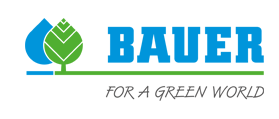Farmer saves thousands of dollars with a simple technique, turning waste into profits
MELBOURNE: A south western farmer has teamed up with local dealers ThinkWater in Mt Gambier and Warrnambool to put to good use, waste from their dairy cattle.
John Hunt who manages a dairy farm in Kongarong, is a thick set New Zealander with a beard, and a voracious appetite for farming. He lives, eats and breathes farming and almost knows all his cows by name.
John and his crew maintain what is called a low-cost option in paddock enrichment. “The cows need to be good converters of grass and we’re trying to do that that here as well as maintaining our pasture with low-cost option,” said John.
The Hunts have cleverly optimised their paddocks to produce not only more pasture but by introducing higher yielding nutrients through a planned introduction of effluent to their irrigation.
By distributing material through their Bauer Rainstar irrigation systems they have been able to grow pasture with a whisker under 20 tonnes per Ha on the twenty seven hectares irrigated by hard hose. The system feeds effluent from ponds into the irrigator, mixes with the water to produce a ‘shandy’ of effluent of about five percent to the rest of the water. The amount of effluent is adjustable with the variance determined by soil testing, and periodically checked to ensure a quality feed for the cows.
The sprinklers must maintain a constant flow across the pasture and John says that with his use of the Rainstar, it can keep up the flow rate of a pivot. “We’re on a six-day round applying 25 mls a run, so, every six days we start the run again.”
“This machine is well suited to our block especially as it allows us to input effluent into the system. One person can operate Bauer’s Rainstar easily and safely due to the 180 degree swivel of the pipe reel, making it easy for a second strip to be irrigated opposite the initial run, a saving in efficiency and labour costs.
“We don’t have to put on fertiliser, saving us a whopping $17,000 per year for what we’d normally do,” explained John.
John Hunt gained his experience in Ashburton, NZ’s north island, where he worked on dairy farms, became a stock agent and then sold farm chemicals, which when combined, says John, “gives him a better appreciation of low cost pasturing and obtaining better results with cows than people.” Australia offers more opportunity for John and his family but you can’t persuade him away from his beloved New Zealand rugby team.
New Zealand is a lot stricter than Australia in farming and particularly in the use of effluent and its separation of solids and liquids. “Effluent is a resource — you want to use it, not get rid of it,” John says.
Background: Technical Description
After the liquid is separated by being washed down from the milking stalls, it is deposited into ponds, and later pumped out and recirculated to combine with the water before it is turned on at the irrigator end. Adjustment is simple as is the technology but the results are phenomenal. The Bauer irrigator is thus pulled out ready, and when the valve is turned on, the combined liquid does its job by spraying vast areas of pasture, now proven to be not only cost effective, but a boon to quality pasture and good for the cows.
John Hunt’s cows go through a genetic breeding program using NZ LIC bulls who are good converters of pasture-to-milk, also working on good components. They are low input, using between 400 and 700 kg per grain per cow depending on the year. The cows have to work with a stocking rate of 4.5 cows per Ha.
Oamaru Dairies has put in a second Rainstar on another property, designed with the effluent process in mind. The track width of the sprinkler cart is adjustable from 1000–1500mm for added stability. Once the PE pipe has been fully retracted the system shuts off automatically. Speed control and layer compensation operate automatically too as soon as the irrigation run is completed, with the sprinkler cart mechanically lifted on to the pipe reel, the machine is thus ready for transport. It is a handy addition and does away with manual loading.




